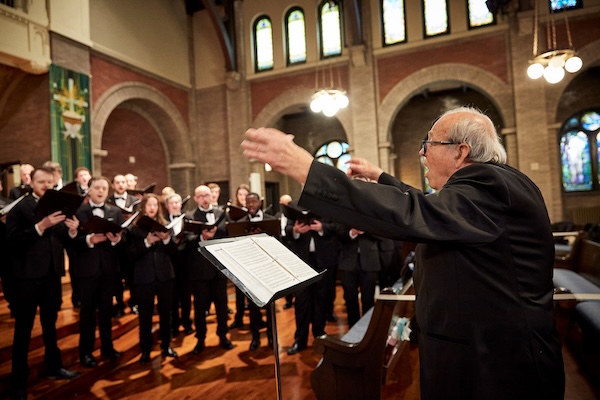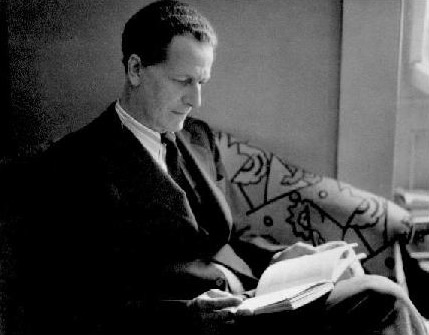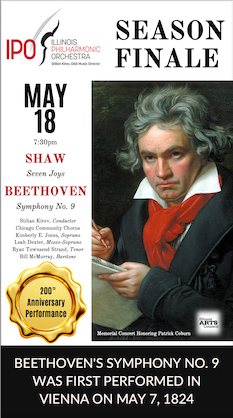Chicago Chorale delivers a worthy performance of Martin mass

Even in a city with a plethora of excellent professional choruses, the all-amateur Chicago Chorale has found a niche with its ambitious, at times quirky, programming under artistic director Bruce Tammen.
Tammen led his ensemble in a short Palm Sunday concert at Hyde Park Union Church, in which the main work was Frank Martin’s Mass for Double Chorus.
Son of a Calvinist minister, Martin was among the most religious of 20th-century composers—to the extent that after completing his Mass for Double Chorus in 1922, he locked it in a drawer for 40 years. “I did not want it to be performed,” said the Swiss composer. “I considered it as being a matter between God and myself.”

Fortunately for posterity, Martin ultimately relented at the urging of a conductor friend, and the mass was premiered in 1963. Martin was an intensely self-critical composer whose total oeuvre was small, but the Mass for Double Choir is his masterwork, a luminous, individual work set in a concise 25 minutes.
Tammen led a worthy performance of Martin’s mass on Sunday. The Chorale singers largely responded to the score’s challenges with game and committed vocalism, though at times, their nonprofessional status was betrayed by fitful errant entrances. The performance overall would have benefited from greater tonal polish and cohesion. Interpretively, one sometimes wanted a wider dynamic range and more nuanced expression.
One positive of the intimate venue, in addition to the immediacy of the singing, was that the ingenuity of Martin’s writing was manifested visually as well as aurally—as with the opening section in which the mezzos and then the sopranos in each of the two choirs repeat the “Kyrie Eleison” antiphonally, Venetian style.
The Credo was particularly well-characterized, with rapt singing of the “Et incarnatus est” set against the vehemence of the ensuing “Crucifixus etiam pro nobis.” Taken at a fast pace, the spiritual excitement of the canonic “Et resurrexit” was palpable, and the“Et in Spirit Sanctum,” went with an almost jaunty swing.
Initially, Martin concluded his mass with the full-voiced spiritual rejoicing of the Sanctus. But four years later in 1926, he added a setting of the Agnus Dei, which ended the work on a more equivocal and questioning note. Tammen and his singers were at their finest here with sensitive singing that conveyed the degree of hopeful solace set against the inexorable, slow-trudging counterpoint.

The Martin mass was preceded by three motets, which nicely set the stage for the larger work.
The Chorale sopranos sounded a bit squally in the opening work, Mendelssohn’s Denn er hat seinen Engeln befohlen, while the men were warmer and more rounded of tone.
Brahms’ expansive setting of Warum ist das Licht gegeben dem Mühseligen? fared better with Tammen nicely delineating the drama of the opening section with the more joyful middle part (“Lasset uns unser Herz”) and the fervent and powerful final section.
Written for double choir like the Martin mass, Brahms’ Ich aber bin elend was likely his final choral work, and received a rich-voiced and resplendent rendering in this powerful plea for mercy and a spiritual haven.
The concert was dedicated to the memory of Bernard Owen Brown, a member and longtime supporter of the Chorale.
The Chicago Chorale performs “Music of the Americas” June 1 and 2. chicagochorale.org
Posted in Performances





